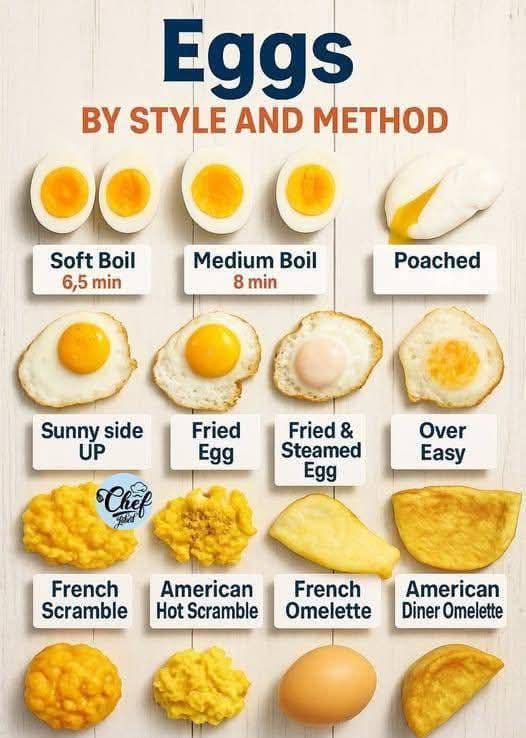The Ultimate Guide to Cooking Eggs: Styles, Methods, and Techniques
Eggs are one of the most versatile ingredients in the culinary world. They are affordable, packed with nutrients, and can be prepared in dozens of ways depending on the cooking style, culture, and preference. Whether you love your eggs runny, jammy, or fully set, there is a perfect method out there for you. In this guide, we will break down the most popular ways to cook eggs, from boiling and frying to poaching, scrambling, and making omelettes. We’ll also explore tips, tricks, and common mistakes so you can master the art of cooking eggs at home.
1. Boiled Eggs: Soft, Medium, and Hard
Boiled eggs are a breakfast classic, loved for their simplicity and nutrition. The difference lies in the cooking time, which changes the texture of the yolk.
Soft-Boiled Eggs
Cooking Time: 6 to 6.5 minutes in gently boiling water.
Texture: Firm whites with a soft, runny yolk.
Best For: Toast soldiers, ramen bowls, and salads.
To make them, place your eggs in simmering water, cook for exactly 6 minutes, then transfer immediately to an ice bath to stop cooking. This results in that luxurious golden yolk that oozes out when you crack the egg open.
Medium-Boiled Eggs
Cooking Time: Around 8 minutes.
Texture: Whites are firm while the yolk is jammy, not runny but not solid.
Best For: Sandwiches, grain bowls, and noodle dishes.
Medium-boiled eggs are ideal for those who don’t like overly runny yolks but still want some creaminess.
Hard-Boiled Eggs
Cooking Time: 10–12 minutes.
Texture: Fully set yolks and firm whites.
Best For: Deviled eggs, egg salads, or eating with a sprinkle of salt and pepper.
A common mistake with hard-boiled eggs is overcooking, which leads to a greenish ring around the yolk. To avoid this, always cool them in ice water after boiling.
2. Poached Eggs
Poached eggs are considered elegant and delicate. They are cooked outside the shell in simmering water with a splash of vinegar to help the whites set quickly.
see next page
ADVERTISEMENT
ADVERTISEMENT

